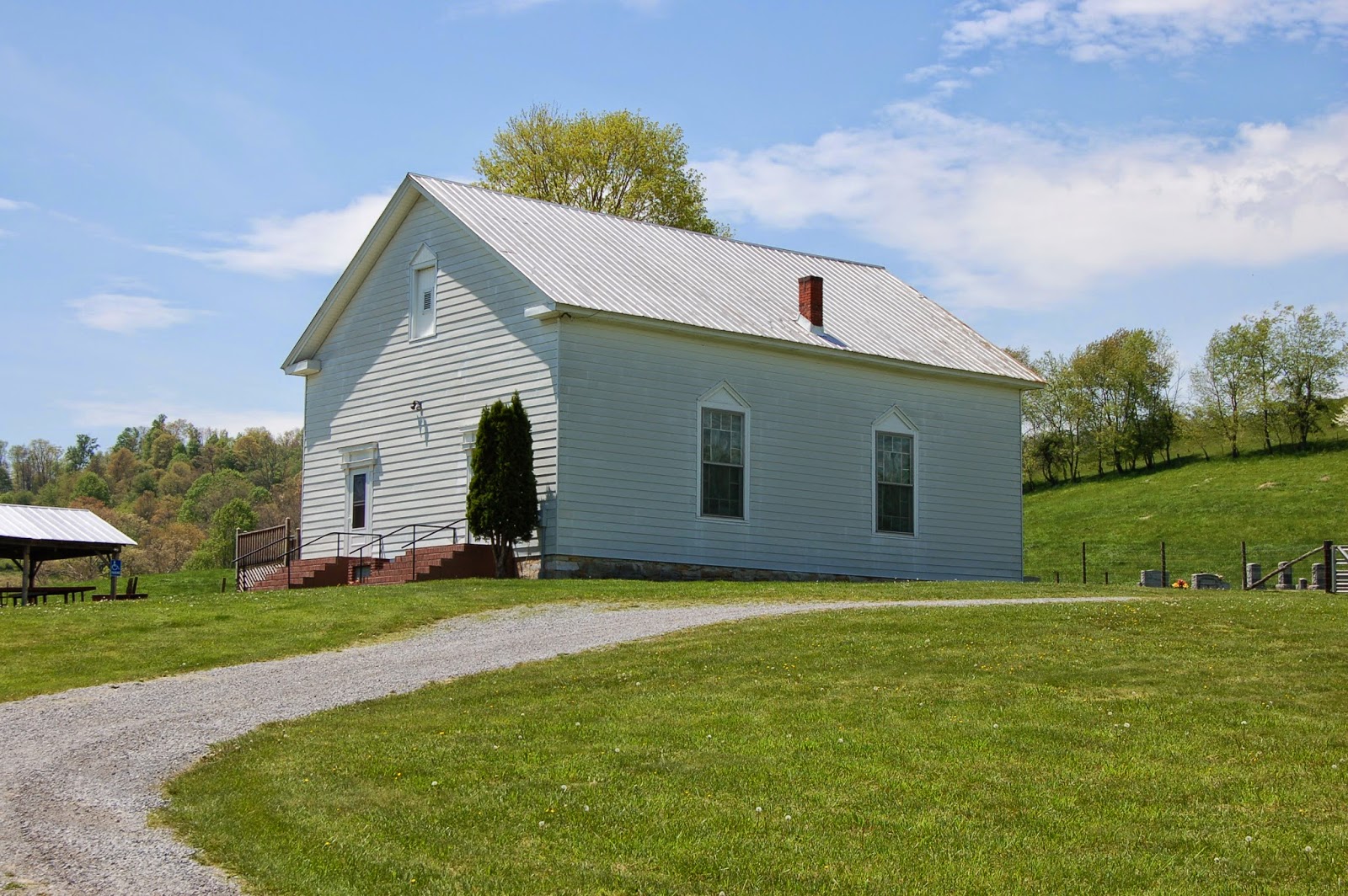Throughout my research, I’ve been looking for evidence of the
religious affiliation and faith of my ancestors. Regarding the Harman, Waggoner
and Troutman families, I’ve found a few hints.
Adam Harman’s “German Lutheran Bible”[1] and
its records were handed down through the family until it was finally given to
the Virginia State Historical Society in Richmond. It contains several
expressions of faith. For one, Adam wrote, “Lord Jesus for you I lived. Yours I
am in death and alive.” Also, Adam quoted his wife Louisa Katrina’s last words:
“I know that my Savior lives, and he will support me when leaving the earth. .
. .”[2] Adam
and Louisa seem to have shared a strong faith in God.
Adam’s brother Jacob told Moravian missionaries that his
grandfather was Moravian and had left Germany because of persecution, which the
missionaries dutifully recorded in their journal.[3] The
Harmans were mentioned several times in Moravian records in North Carolina,
where the families located after being driven from Virginia by Shawnee warriors.[4] Later
in Virginia, Harman families became associated with the Methodist Church. The
story goes that Bishop Asbury and other Methodist missionaries came through the
area preaching and teaching God’s Word and were welcomed at the Holly Brook
home of Elias and Polly Harman, son and daughter-in-law of Henry Harman, Sr.[5] Thus,
many of the Harman families embraced the Methodist Church and its teachings.[6]
Jacob Waggoner’s first ancestor to America, Adam Waggoner
was also reported to have fled Germany to escape “religious persecution and
economic hardship” in the Palatine region of southwestern Germany,[7] but
his religious affiliation is not mentioned in any of the sources I’ve found so
far. The persecution and poverty in Germany at that time is hard for us to
imagine, but it must have been terrible for the people to have taken the chance
on surviving several weeks floating down the Rhine to Rotterdam, long delays
there and in Liverpool, and then eight to sixteen weeks sailing across the
Atlantic Ocean.[8] Despite
the unimaginable filth, disease, and death on the ships, Germans were pouring
into the Americas. From 1708 through 1760 an estimated 100,000 Germans came to
these shores.[9] The
prospect of religious freedom and an opportunity to own land was a tremendous
motivator for these staunch and determined people.
By the 1860s, Jacob and Ann Waggoner were associated with
the Methodist Church. In 1867, Jacob, Elias Repass, and Felix Buck, acting as
trustees, purchased land on which to build a church and school. The church became
known as Doak’s Chapel.[10] The
name of the church was later changed to Bethany United Methodist Church and a
new building was erected in 1880.[11]
Located at Ceres, Virginia, it is still an active congregation today.
 |
| Bethany United Methodist Church, Ceres, Virginia; photo courtesy of Find A Grave volunteer Ronnie Mallory. |
Grandpa Clint’s father Daniel Troutman came from a Lutheran
tradition in North Carolina. At Troutman Family Reunions in the old school on
the Troutman Cemetery grounds, I’ve been impressed by the hymns of faith
sung and the sermons preached by the Lutheran pastors. Yet Daniel also converted to the Methodist
Church while living in Rich Valley, Virginia. However, three of his children joined the Rich Valley Presbyterian Church, and he and America and several of their children are buried in the cemetery next to the church.
 |
| Rich Valley Presbyterian Church (1836); Daniel and America Troutman and many Pratt/Troutman ancestors are buried here. Photo by Z. T. Noble. |
 |
| Riverside Church, where Daniel and America Troutman were members. Photo by Z. T. Noble. |
This Methodist tradition on both sides in the family histories
of my grandparents Mary and Clint Troutman explains why they raised their
children in the Methodist Church. Today, some of their descendants are still
Methodists--we even have one ordained Methodist minister who has written a book about John Wesley: The Form and Power of Religion --but some have embraced other Christian traditions, including
Lutheran, Catholic, Unitarian, Church of God, Episcopalian, Presbyterian,
Baptist, and so forth, each one seeking his or her path to God.
© 2014, Z. T. Noble
[1] John
Newton Harman, Harman Genealogy (Southern
Branch) with Biographical Sketches and Historical Notes, 1700-1924
(Radford, Virginia: Commonwealth Press, Inc., 1925), 49.
[2]
Harman, Harman Genealogy, 50.
[3] Mary
Kegley and F. B. Kegley, Early Adventures
on the Western Waters, Vol. 1 (Orange, Virginia: Green Publishers, Inc.,
1980), 223.
[4]
Kegley, Early Adventures, 223.
[5]
Harman, Harman Genealogy, Vol. 1,
202.
[6]
Kegley, Early Adventures, Vol. 1,
223.
[7]
Thomas Hatcher & Nancy Nash, The Adam Waggoner Family of Tazewell and
Montgomery Counties of Virginia, 1750-1996, (no place: no publisher, 1996), 1.
[8]
William A. Probst, The Probst Chronicles:
The History of Early Probst Families in Pennsylvania, 1999, Probst Family
History and Genealogy (http://homepages.rootsweb.ancestry.com/~brobst/chronicles/chap2.htm
: accessed 31 July 2014), Ch. 2, “The History of German Immigration to
America.”
[9]
William A. Probst, The Probst Chronicles:
The History of Early Probst Families in Pennsylvania, 1999, Ch. 2, “The
History of German Immigration to America.”
[10]
Bland County, Virginia, Deed Book 1: 296-97, Robert and Margaret Doak to Elias
Repass, Felix Buck, and Jacob Waggoner, Trustees, 4 November 1867; County
Clerk’s Office, Bland.
[11]
“Bethany United Methodist Church, Ceres, Virginia, 1880-1980,” 100th
Anniversary celebration pamphlet published by the church; digital copy sent to the
author by the Bland County Historical Society, 2 July 2014.



















